 On November 1, 1661, Spanish actors and musicians could be heard dancing a sweet and melodious ballet below Queen Marie Theresa’s window. Unfortunately, her husband Louis XIV and many of the courtiers could hardly appreciate the serenade while Marie Theresa was screaming, “I don’t want to give birth, I want to die! (1). Without much to dull the pain, many women of the time probably related to her plea. Throughout history, midwives and doctors have used various strange and sometimes lethal concoctions to ease the pain of child birth. Here are just a few of my favorite:
On November 1, 1661, Spanish actors and musicians could be heard dancing a sweet and melodious ballet below Queen Marie Theresa’s window. Unfortunately, her husband Louis XIV and many of the courtiers could hardly appreciate the serenade while Marie Theresa was screaming, “I don’t want to give birth, I want to die! (1). Without much to dull the pain, many women of the time probably related to her plea. Throughout history, midwives and doctors have used various strange and sometimes lethal concoctions to ease the pain of child birth. Here are just a few of my favorite: The Plant of Joy
The Plant of JoyThe ancient Egyptians drug of choice was opium otherwise known as the “plant of joy.” Opium was derived from the sleep inducing poppy plant and with the correct dosage could pretty much knock a pregnant horse out. 16th century doctor, Paraclesis later combined opium with his own secret ingredients of crushed pearls, henbane and frog spawn and named it laudanum. By the 19th century, laudanum could be found in every major pharmacy packaged in its pretty glass bottle for dainty ladies to sip with their brandy. Today, opium is a derivative of the highly addictive painkiller, morphine. It’s typically given to patients in extreme pain, but would never be administered to a woman in labor unless she wanted her newborn baby to get an early start on drug addiction.
 Willow Bark
Willow BarkThe Greeks favored willow bark to ease child birth pain and although certainly not as powerful as opium, willow bark did relieve some pain. By the 19th century, chemists figured out that the Greeks were on to something and were able to distract the pain relieving component of willow bark called salicylic acid, known today as Aspirin. Most doctors today advise pregnant women not to take aspirin because it can cause placental abruptions and might actually delay labor.
 The gift of myrrh
The gift of myrrhYou have probably heard the Christmas story of the three wise men who visited the baby Jesus bringing gifts of gold, frankincense and myrrh. What is still up for debate is whether the myrrh was a gift for Jesus or Mary. Myrrh has long been used as a pain killer because of its soothing effects on inflamed tissues.
 Grease the Wheel
Grease the WheelMedieval midwives probably win the award for wacky pain killers. They often used oily substance like the grease of a duck or hen to ease the mother's pain and speed the baby’s passage into the world. Sometimes they even injected olive oil into the pregnant woman’s rectum. If baby’s first medieval slip n’ slide didn’t work than they would try screaming into the women’s vagina to coax the baby out.
The veil of pain
Things got a little dicey by the 14th – 17th period for midwives who were often accused of witchcraft when trying to ease a new mother’s pain. In 1591, James VI ordered a new mom and her midwife executed for witchcraft because they had taken a pain relieving concoction. (Granted, the concoction happened to contain dug up remains of various corpses...but ease up James!) At the time, the Church taught that childbirth was part of the sins of women blaming it on Eve and her forbidden fruit. bla bla bla. Women were expected to endure the pain and accept their lot in life. For this reason, the stoic Isabella I gave birth under a veil because she didn’t want the midwife to see her in pain. If you have ever been in labor than you probably know that by the end you don’t care if you are half-naked.

Chloroform a’ la reine
 By the 1800s, James Young Simpson was the first to use diethyl ether during child birth. Simpson then experimented with chloroform and found that just knocking the woman out cold was the way to go. Women would inhale the fumes, drift into la la land and then wake up to find a baby in their arms. Sounds ideal, right? Maybe for the mom. Both ether and chloroform passed to the baby so there must have been some groggy babies being born.
By the 1800s, James Young Simpson was the first to use diethyl ether during child birth. Simpson then experimented with chloroform and found that just knocking the woman out cold was the way to go. Women would inhale the fumes, drift into la la land and then wake up to find a baby in their arms. Sounds ideal, right? Maybe for the mom. Both ether and chloroform passed to the baby so there must have been some groggy babies being born.Queen Victoria was the first royal to give her official stamp of approval to chloroform assisted births. Soon, taking chloroform during labor became so fashionable with the upper class that it was named Chloroform a’ la reine.
Today, many women choose natural child birth and experience the same gut wrenching agony as women of the past. I have a lot of respect for these women, but I am just not that brave. If all goes well, I will be thanking modern science and my beloved epidural in a few weeks. But it does make me wonder….what will we use 100 years from now to ease child birth pain. Will we laugh at epidurals as archaic? Maybe by then, men can give birth instead?
Notes:
(1) Fraser, Love and Louis XIV, 77
Sources and Further Reading:
Cassidy, Tina. Birth: The Surprising History of How we are Born, New York, NY: Altantic Monthly Press, 2006.
Gelis, Jacques. History of Childbirth: Fertility, Pregnancy and Birth in Early Modern Europe, Polity Press, 1996

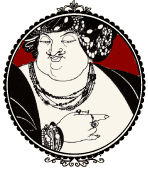

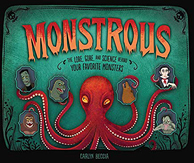
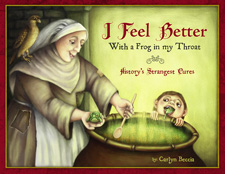
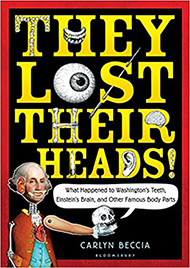


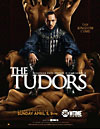

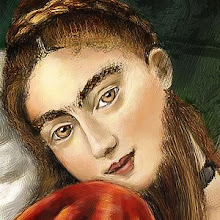

9 comments:
I tried to go natural for as long as humanly possible with my daughter (or as I refer to her "Princess Elizabeth, My First & Only). I knew I was going to get an epidural--I'm no martyr--but I wanted to see if I could "handle" the pain.
After 1.5 hours, I was screaming in agony and begging to be "epiduraled." I admire ANY woman, past and present, that can go natural. But me? I'm all about the drugs.
ps I still refer to my anesthesiologist as "Dr. John, the Pain Go Bye-Bye Man."
For decades now a lot of women have gone in for pre-scheduled Ceasarian section without any of this holistic health nonsense of "a
trial of labor" first. Doctors have mixed feelings about this, while
midwives are appalled. As general anesthesia makes for dopey babies, spinal anesthesia is used. The trade off for pain-free is
numb and paralyzed from the rib-cage down. They pulled a little
curtain so I couldn't see what was being done. but my son's father later said that it was very odd to see the viscera of a person one
knew. Coming out of the spinal, and the post-surgical chill, were
bad enough that I made no effort to "bond" until the next day.
When Mary Queen of Scotts was in labor with her only full-term pregnancy, attempts were made to magically "cast" her pain onto a volunteer, one of her women in waiting, Net result-- terrible pain
and exhaustion for both women.
MQS's only other known pregnancy ended in miscarriage. As the babies were Bothwell's.
Bothwell had deserted her, and she had been forced to abdicate in favor of her son James, perhaps this early ending was a relief?
Fascinating post. I am too terrified of pain to even consider children. I cannot see anything about children that makes all that pain even slightly worthwhile... and I am so grateful for the contraceptive pill. I pity the poor women throughout history who didn't get that luxury! Or those that HAD to produce children - son or beheading, Queen Anne?
Amy, I tried to do as long as possible too (which probably wasn't that long). I swear I was ready to name my first born after the anesthesiologist. Thank god for drugs.
entspinster - I am such a baby when it comes to c- sections. They terrify me.
That's interesting about Mary - I had heard the bit about her carrying twins but never the magical cast that she used during labor. Did she use it on one of the Marys?
Anonymous - It's a morbid thought but many of us would not have survived labors of the past. I am pretty sure that I would not have survived my first pregnancy without modern medicine. I had a 104 fever during labor. Antibiotics kicked it within a day.
Fear of Caesarian childbirth is realistic. At the time that I had my son, it was elieved that if a woman with iabetes went undelivered past her due date, the child might die still unborn. Given the choices... But how a
woman can choose a
prescheduled C-section for
convenience and comfort (!) not only once, but several times, is beyond me. Still it is said to be quite common. And perhaps the experience isn't quite so bad now-a-days.
As for MQS-- the practitioner, the "witch", was said to be Margaret
Fleming, Countess of Athole and sister of Mary Fleming. The target was reported to be "Lady Beres, the queen's wet-nurse". That is to say the wet nurse MQS used for her son.
Legend further claims that
Margaret Fleming attempted the same "pain control measure" for the Queen of James VI (and later James the First of England). That would be Anne of Denmark. I guess that with no reliable way to reduce pain, it was considered to be worth a try even if earlier attempts hadn't been all that much
use.
I forgot to mention in my first comment that after the epidural and 4.5 hours of pushing, my doctor insisted on a c-section. Elizabeth was weighing in at 10 pounds and I was too narrow to push her out the "normal way." To his credit, my doctor did give me a chance to have her without a c-section.
Was I afraid of having a c-section? Yes, of course. It's major surgery. But I was exhausted, she was huge and she wasn't moving at all. My c-section experience wasn't as scary as I thought it would be. The nurses and doctors were friendly, cheerful, and made me laugh a few times while they prepped me. I did panic a little when my husband was long in coming to the OR (they couldn't find scrubs short enough for him, so he was cuffing them in the hallway so he wouldn't trip). I'm convinced that if I tried to have her "the normal way," it would have been a disaster.
I'm pretty sure that if I had to give birth in past centuries (or past decades even), either I or Lizzie or both of us would have died in childbirth.
I had both of my children without episiotomies or epidurals or painkillers. I'm not a martyr either, but I think if you are prepared for the fact that it is going to hurt a little, you can get through it. Women having been doing for a long time. :-) Too many women are so scared of the pain, they don't even try to have the child naturally. My boys were both large babies and I am not, so it can be done!
The "childbirth experience" varies wildly, not only from one woman to another, but from one birth to another. The woman the "Taj Mahal" was erected to honour died after a long unproductive labour. It was her twelfth child!!!
In 1982, when I had my only child, the ideal of "natural childbirth", preferrably at home with friends massaging your back and singing folk songs, was fresh and new. But nobody were I lived then was prepared to risk that with a thirty-six yeat old first time mother with gestational diabetes.
Any childbirth in which either the mother or the child lives is nothing to be ashamed of.
One speculation as to why Elizabeth Tudor never married is that she feared childbirth. Considering that two of her fathers six wives died immediately after giving birth to their first pregnancy-- Jane Seymour, of course, but also Katherine Parr with Thomas Seymour, her fourth husband and Jane's brother-- it was probably one of the factors in the "Virgin Queen" remaining so.
vary nice blog
here i would love to share a blog
about women health
http://www.mybabydoc.com/blog/
tubal reversal
Post a Comment